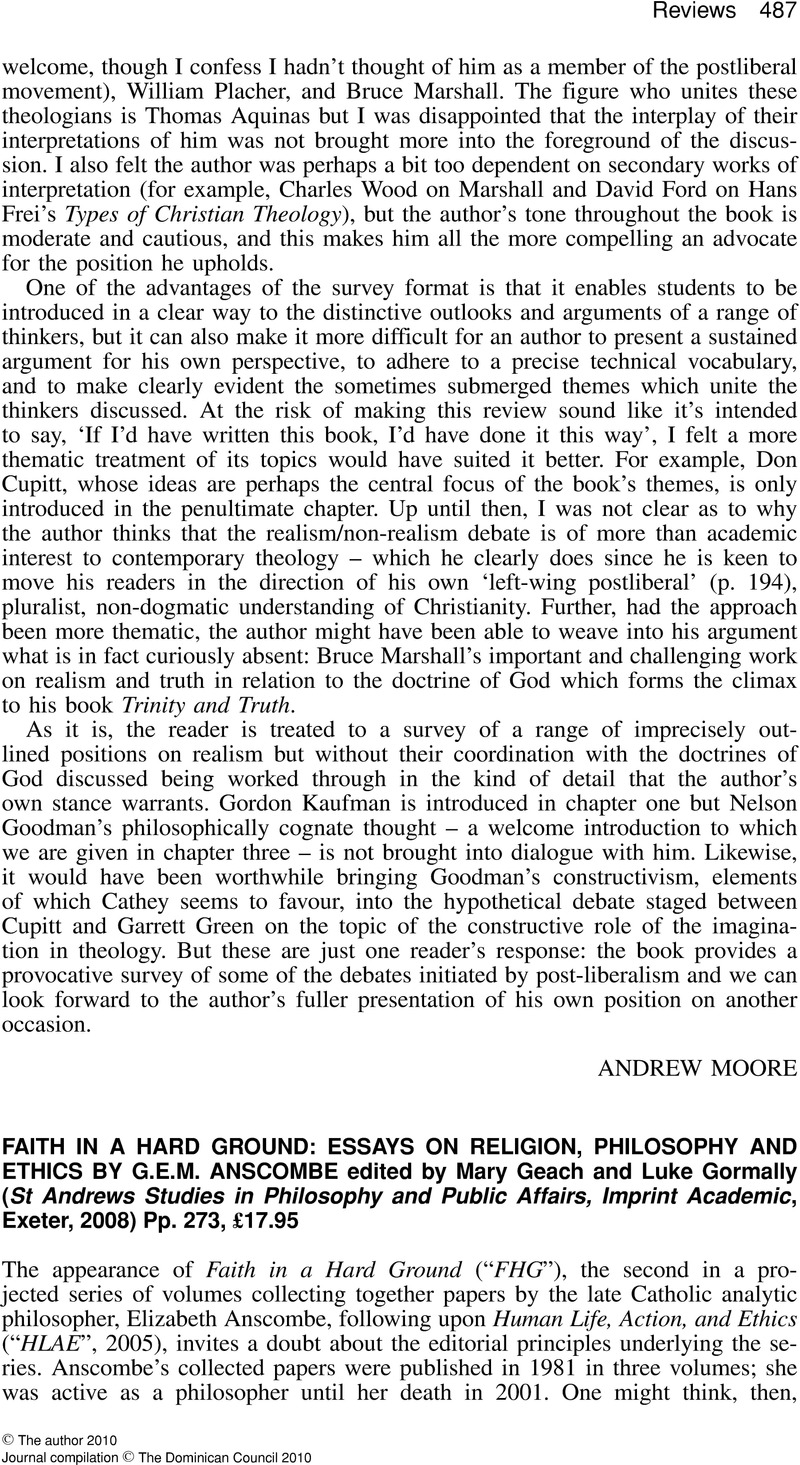No CrossRef data available.
Article contents
Faith In a Hard Ground: Essays on Religion, Philosophy and Ethics by G.E.M. Anscombe edited by Mary Geach and Luke Gormally (St Andrews Studies in Philosophy and Public Affairs, Imprint Academic, Exeter, 2008) Pp. 273, £17.95
Review products
Faith In a Hard Ground: Essays on Religion, Philosophy and Ethics by G.E.M. Anscombe edited by Mary Geach and Luke Gormally (St Andrews Studies in Philosophy and Public Affairs, Imprint Academic, Exeter, 2008) Pp. 273, £17.95
Published online by Cambridge University Press: 01 January 2024
Abstract
An abstract is not available for this content so a preview has been provided. Please use the Get access link above for information on how to access this content.

- Type
- Reviews
- Information
- Copyright
- Copyright © The author 2010. Journal compilation © The Dominican Council. Published by Blackwell Publishing Ltd.


